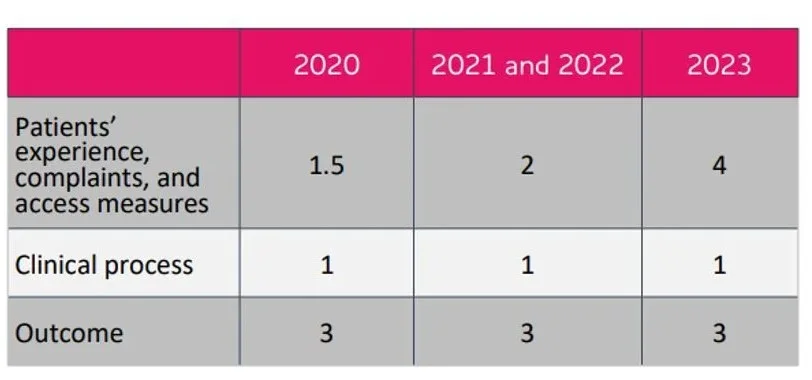
Patient Satisfaction: How Healthcare Providers Can Enhance Patient Experience
Whether it is a clinic, hospital, or specialized healthcare center, its reputation suffers when it fails to deliver patient satisfaction.
The same happens to many of our clients at Harvee Healthcare as they have substantial marketing strategies like well-run campaigns, optimized online presence, engaging healthcare social media strategies, and trending marketing techniques. Still, the problem is they fail to provide good patient satisfaction. As a result, negative reviews and word-of-mouth can quickly destroy all the hard work that has been done to bring in the patients.
A study conducted by NLM in 2010 on how patient satisfaction affects dermatology service providers clearly states how vital patient satisfaction is by a quote – “A satisfied patient is a practice builder”.
Continue reading this blog as we will explore how healthcare providers can improve patient satisfaction, how to conduct effective digital patient surveys, and how to leverage technology to enhance the patient experience.
Understanding Patient Experience vs. Patient Satisfaction
Before diving into strategies for improving patient satisfaction, it’s essential to understand the distinction between patient experience and patient satisfaction.
Patient Experience
It refers to the overall journey a patient has within a healthcare facility, from booking an appointment to receiving treatment and follow-up care. It includes interactions with staff, wait times, facility cleanliness, and ease of communication.
A negative patient experience can severely damage a healthcare clinic or hospital. The unhappy patients leave bad reviews, discourage others from visiting, and may even file complaints that tarnish the reputation of the facility.
Patient Satisfaction
It is a measure of how well a patient’s expectations are met. It is more subjective and is based on the patient’s perception of the care they received. While patient experience focuses on objective factors, patient satisfaction is about how the patient feels about their healthcare journey.
While a hospital may provide an excellent patient experience, it does not necessarily mean that every patient will be satisfied. Expectations vary from patient to patient, and healthcare providers must address both experience and satisfaction to achieve high ratings.

Source: A table showing the evolution of CMS’s methodology for calculating star rating quality scores. Recently, CMS has placed greater emphasis on access to care and patient experiences. The weight assigned to patient experience, complaints, and access measures has increased from 1.5 in 2020 to 4 in 2023.
8 Tips to Follow To Improve Patient Satisfaction
Here are the eight tips we recommend to healthcare service providers to improve patient satisfaction. They are,
- Effective Communication
- Reduce Wait Times
- Ensure a Comfortable Environment
- Empower Patients with Information
- Train Staff in Customer Service
- Utilize Technology
- Follow Up with Patients
- Encourage Feedback and Act on It
Effective Communication
One of the most critical aspects of patient satisfaction is communication. Patients need to feel heard, understood and informed. So doctors, nurses, and staff should,
- Use simple language to explain medical conditions and treatments.
- Show empathy and listen actively to patients’ concerns.
- Follow-up on patient queries in a timely manner.
Reduce Wait Times
Long wait times are a common complaint among patients. So, healthcare providers should reduce wait time by,
- Implementing an efficient appointment scheduling system.
- Keeping patients informed about expected wait times.
- Offering virtual consultations to reduce in-person waiting.
A 2019 study shows that the average waiting time of a patient is 21 to 30 minutes. The study respondents were dissatisfied with the wait time for dispensing the medicine, waiting for the nurse to take the vital signs, entering the dentist, and going to the radiation section.
Ensure a Comfortable Environment
The hospital environment plays a significant role in patient satisfaction. Facilities should be,
- Clean, well-maintained, and welcoming.
- Equipped with comfortable seating and amenities like water dispensers and reading materials.
- Designed to ensure patient privacy and dignity.
Empower Patients with Information
Providing educational resources helps patients feel more in control of their health. Hospitals can,
- Offer brochures and online resources about common health conditions and treatments.
- Encourage patient engagement through digital health tools.
- Ensure doctors provide clear aftercare instructions.
Train Staff in Customer Service
Giving a training section in patient interaction for all the staff members, from receptionists to doctors, who are all in a position to interact with the patients in their journey. Because a positive and friendly attitude can make a huge difference in a patient’s experience.
Utilize Technology
- Online portals for scheduling, accessing medical records, and billing can make patient interactions smoother.
- Telemedicine can provide convenient consultation options.
- AI chatbots can assist with FAQs and appointment scheduling.
Follow Up with Patients
Sending follow-up messages or calls to check on patients after treatment can make them feel valued. This also helps in addressing any post-care concerns early on.
Encourage Feedback and Act on It
One of the best ways to improve patient satisfaction is by actively seeking feedback and making necessary improvements. This is where patient satisfaction surveys come in.
How to Conduct a Patient Satisfaction Survey Digitally
With the rise of digital healthcare solutions, conducting patient satisfaction surveys has never been easier. Here’s how healthcare providers can use technology to gather patient feedback.
Email and SMS Surveys
- After a patient’s visit, send them an email or text with a short survey link.
- Use automated systems to ensure timely follow-ups.
Website and Patient Portals
- Add a feedback form to your website and patient portal.
- Encourage patients to leave reviews directly on your website.
QR Codes in Clinics
- Display QR codes that link to an online survey in waiting areas.
- Patients can scan the code with their phones and fill out the survey instantly.
Social Media Polls and Feedback Forms
- Use platforms like Facebook and Instagram to collect feedback.
- Engage patients by creating interactive stories with quick poll questions.
Google and Online Review Management
- Ask satisfied patients to leave reviews on Google, Yelp, or other review platforms.
- Use reputation management tools to monitor and respond to feedback.
Survey Tools and CRM Integration
- Use tools like Google Forms, Typeform, or SurveyMonkey to design customized surveys.
- Integrate patient feedback into a CRM system to track and analyze trends over time.
- A report for the year 2020 by CMS shows the impact of survey and how it improves the quality of an hospital. Also it shows that over $1.9 billion in Medicare payments were at risk due to hospital performance in 2020.
Example of a Digital Patient Satisfaction Questionnaire
1. How satisfied are you with the ease of scheduling your appointment?
- Very satisfied
- Satisfied
- Neutral
- Dissatisfied
- Very dissatisfied
2. How would you rate the cleanliness of our facility?
- Excellent
- Good
- Average
- Poor
3. Were the staff members friendly and helpful?
- Yes, very much
- Somewhat
- No
4. How satisfied were you with the communication from your healthcare provider?
- Very satisfied
- Satisfied
- Neutral
- Dissatisfied
- Very dissatisfied
5. How long did you have to wait before seeing the doctor?
- Less than 15 minutes
- 15-30 minutes
- 30-60 minutes
- More than an hour
6. What could we improve to enhance your experience?
(Open-ended response)
Takeaway
Maintaining a good reputation both locally and online is essential for sustained long-term growth. To achieve this, patient satisfaction is very important. So, hospitals and healthcare providers must focus on communication, reducing wait times, maintaining a welcoming environment, and leveraging technology to enhance patient experiences.
By prioritizing patient satisfaction, healthcare providers can build trust, improve patient retention, and maintain a strong online reputation. Investing in patient experience is not just about care but also about securing the future of your healthcare business. If you are looking for a healthcare marketing agency, please get in touch with us.
Search
Recent Post
Categories
- AI in Healthcare
- Content Marketing
- Dental
- dental Digital Marketing
- Google Ads
- Google my business
- Healthcare marketing
- Healthcare SEO
- Internet Marketing Tips
- Lead Generation
- Local SEO
- Patient Satisfaction
- pay per click
- Pharma Marketing
- Social
- Social Media Marketing
- Traffic
- Website
- Website Designing
Contact
Get in Touch With Us
Coimbatore Address
- 21/1, Periasubbanna Gounder Street, K.K.Pudur, Coimbatore, Tamil Nadu 641038.
- 098942 76263
- info@harveehealthcare.com

Chennai Address
- RMZ Millenia Business Park, Level 6, Phase II, Campus 4B Unit 602A, Kandancavadi, Perungudi, Chennai, Tamil Nadu 600096.
- 098942 76263
- info@harveehealthcare.com

Dubai Address
- Umm Sequeim 3, Jumeirah Rd Opposite Burj Al Arab, Villa #1 855 A Dubai.
- info@harveehealthcare.com

United Kingdom Address
- 3/2 Powderhall Rigg Edinburgh, United Kingdom EH7 4GA.
- info@harveehealthcare.com

Copyrights © 2025 harvee.co.uk










